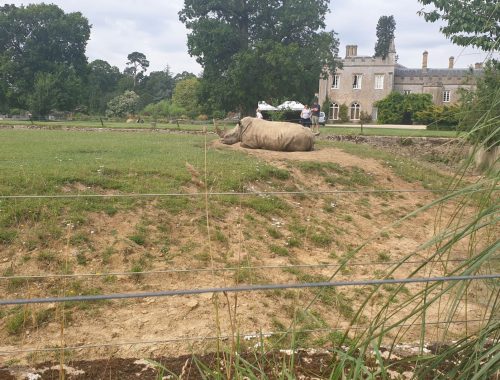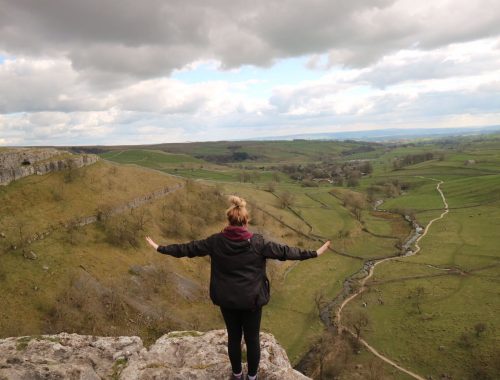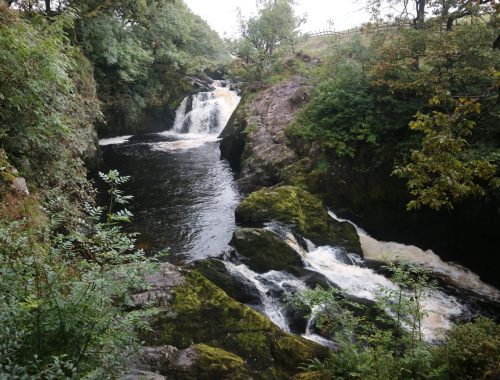Easy Grasmere walk inspired by William Wordsworth
As I am sure most of the British population knows, The Lake District is associated with many famous literary figures, including, but not limited to Beatrix Potter, Samuel Taylor Coleridge, and John Ruskin. But arguably, the most famous figure associated with the Lakes is the poet, William Wordsworth. Wordsworth left his mark all over the Lakes, and managed to do the same in areas all over the country: if you ever visit London, stroll along Westminster Bridge to find his sonnet Composed Upon Westminster Bridge etched on to a plaque.
When visiting the Lake District, you can explore many places linked to him, but it is easy to follow a popular Grasmere walk and explore two of Wordsworth’s homes – places of inspiration for the poet laureate and father of Romanticism – in one day. Dove Cottage in Grasmere and Rydal Mount in… Rydal, are only around two and a half miles apart by road, or slightly more if you take a scenic walk via Rydal Cave as I did. The two villages are closely linked through Wordsworth. Dove Cottage was where Wordsworth lived for nine years with his wife and sister, Dorothy, and Rydal Mount, where Wordsworth spent his final years, before his burial in the churchyard of St Oswald’s in Grasmere.
Related: How to make the most of your holiday in Ambleside
On our visit, we stayed in The Daffodil Hotel and Spa, just opposite Dove Cottage, so made the decision to make it our final stop. After a hearty breakfast, we made our way around Grasmere, to the foot of Loughrigg Fell, where we bore left to amble through the Lake District countryside and begin our walk.

By following established footpaths, we reached Rydal Cave that signifies the industrial history of the area. The first we found was formerly known as Rydal Quarry – a location used to mine slate for the surrounding villages. Although still risky, this cave easy to explore if you are happy to play stepping stones – not a problem if you have a pair of sturdy hiking boots on, but I wouldn’t recommend it if you’re in a pair of Converse. At the back of the cave, there is a raised section of ground, so you aren’t forced to stand in stagnant water, but be cautious of the potential for falling rocks.
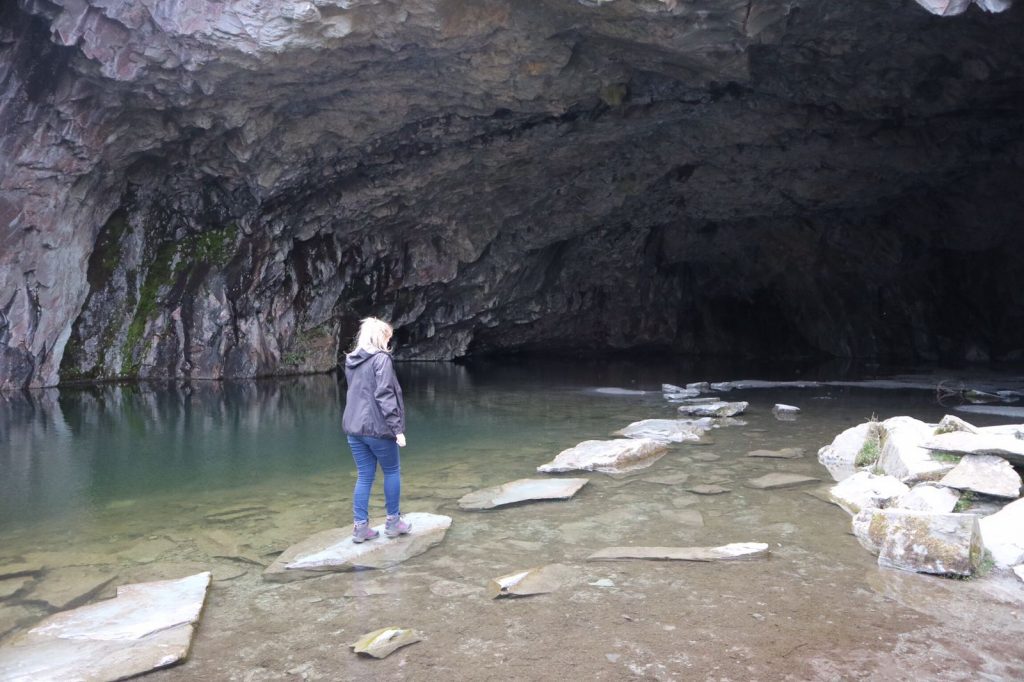
The second cave was a surprise and a bit more of a challenge. The first test is the 15 (odd) foot climb on to the ledge where the cave begins, which was only possible because of a well-placed tree. Then, as the cave is significantly smaller, the cave mouth lets in significantly less light. The real thrill comes from exploring the hidden chamber. Seriously, enter at your own risk. I was terrified that it would collapse in on me. The corridor into the second chamber is probably only 10 steps deep, but due to its positioning, it lets in absolutely no light, so it’s a good job we have torches on our phones.
I didn’t know what to expect. My stomach was churning, imagining all the horrific things that could be in the chamber: bats, zombies, ghosts, but, as usual, I was being melodramatic. The chamber is large and empty, aside from obsidian darkness. The light on our phones gave us a sense of size and space, but there were no stand out features. I highly doubt Wordsworth ever saw the interior of the cave, but exploring Rydal Cave (or caves) is a cool diversion nonetheless.Following another 40 minutes or so of walking through very light woodland after our caving adventure, we crossed over the river and reached Rydal Mount, and as the name implies, it stands at the top of a hill. Just below the house is the small but attractive Rydal church, and the daffodil filled gardens, named Dora’s Field, that Wordsworth bought and dedicated to Dora, his only daughter to reach adulthood.
In terms of the 19th Century, Rydal Mount is quite a grand house for a poet laureate.
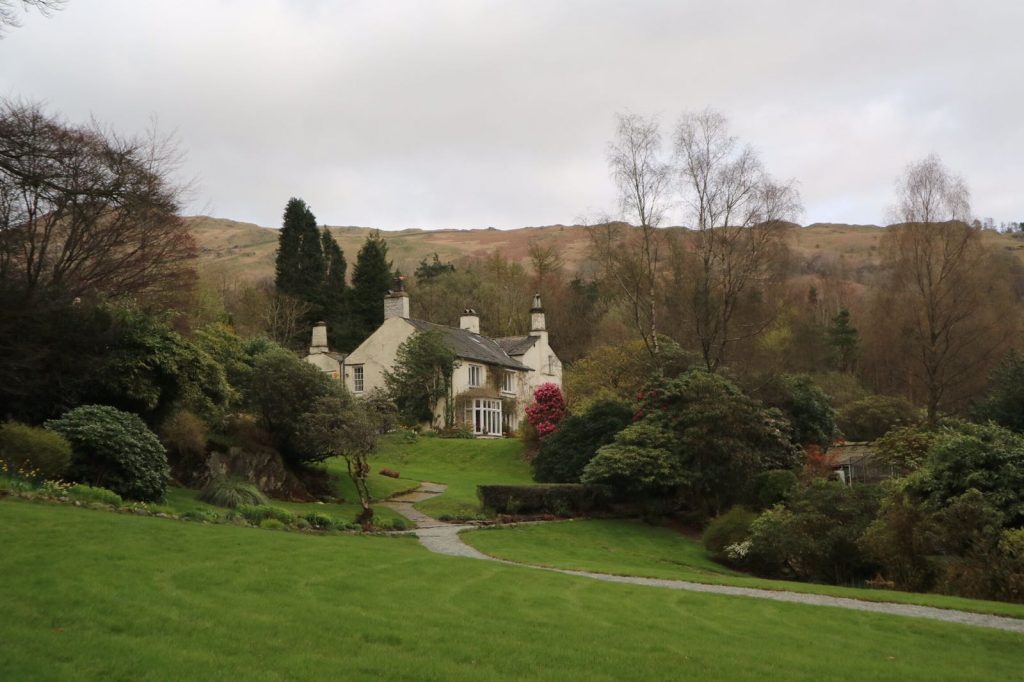
Many of the original pieces of furniture remain at the house, and the most memorable room for me is the dining room – it’s painted in a Christmas tree green. I loved the unusual floor plan of the house itself. As descendants of the Wordsworth family own the house, they have kept a number of the rooms closed to the public, and it was entertaining to work out where certain doors lead. The rooms open to the public include living areas and bedrooms, all fully furnished, some with the family’s most precious artefacts – certificates, books and photographs. In the third-floor room, you can find information about Wordsworth’s life, his family and the context of some of his most famous works. Perhaps most fascinating is the heart-breaking reaction he had to the death of his daughter Dora. She died aged only 43 due to tuberculosis, and in his distraught state, he planted the daffodils at Dora’s Field and refused to write any new poetry.
Although the house may be grand, it has nothing on the garden. Built on a hill, the garden offers stunning views across the landscape. From there, you can see Rydal Water, a hundred trees, and in spring, yellow specks dot the fields. Only a wire fence separates the garden from the wilderness of the Lakes, and the trees that form the boundary are scattered with songbirds’ nests. At the top of the garden, there are pergolas and benches designed for the women in the family. From there, you have a bird’s eye view of the lawn, Dora’s Field, and the surrounding countryside. I love a historical house, but I was smitten with the garden.
After a few hours exploring the house, and enjoying some lunch at The Old School Room Tea shop, we returned to Grasmere following the same walk as before, but turning off to follow the paths along the banks of Rydal and River Rothay rather than up the side of the mountain,.
Once serving as a pub, Dove Cottage is simpler in size and decoration. Although a building of significantly less rooms, the entry includes a guided tour. Many of the rooms are quite dark, as the walls are panelled with a dark wood, and some of the lower floor is actually below ground level. One of the rooms even has a stream running below it, which keeps it cool, and as far as I remember, was where the family kept their food. In Dove Cottage, you can find Wordsworth’s favourite lounge chair, and an array of everyday articles that would have been used by the family or simply date from the time period. Although drastically smaller than Rydal Mount, Dove Cottage is particularly charming, as it is more accurate to my expectations of the way people would live in the 18th century.
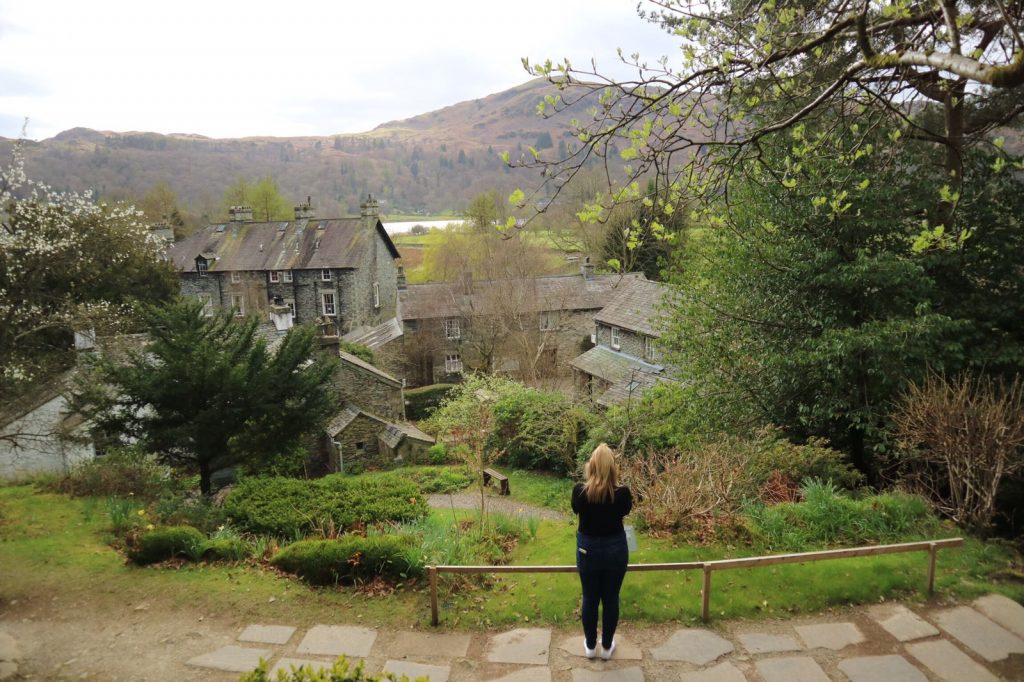
Again, the garden really makes the home. Like Rydal Mount, the garden is on a hill, with a bench at its highest point. At the time Wordsworth lived there, the cottage had an unspoilt view out onto Grasmere Lake. Now, a row of terraced Victorian houses and the hotel stand in the way, but I think it makes it more appealing. The fells in the distance seem more imposing here than at Rydal Mount, creating a stronger sense of the power that nature has in the Lake District. It was at Dove Cottage that Wordsworth composed his most famous works, and what a better location than to craft Romantic poetry?
Though Rydal Mount is certainly more of a recognisable house, Dove Cottage is the more appealing home, and the more inspiring location. No wonder Grasmere was so important to him, and this walk might make the place important to you too.

Did you like this post? Why not let me know what you thought by leaving me a comment below? Or, if you want to keep up to date with new posts and any other travel ideas or thoughts I might have, you could follow me on Twitter or Instagram instead.


